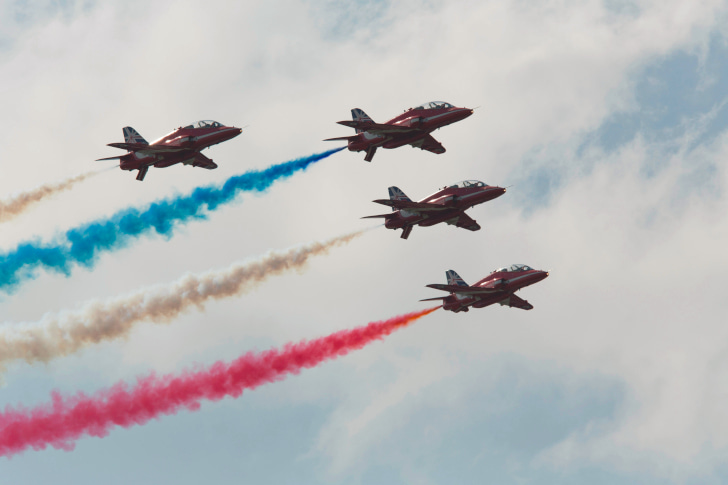The history of the Farnborough International Air Show can be traced back to 1932, when the Society of British Aircraft Constructors (renamed the Society of British Aerospace Companies in 1964) organized a one-day air show and trade fair at Hendon Aerodrome in London. The SBAC hosted annual aircraft displays until 1938; the event went on hiatus during World War II and was revived in 1946.
In 1948, the SBAC moved its annual show to the Royal Aircraft Establishment Field in Farnborough, and so the Farnborough International Airshow was born. The event was held every year until 1962, when it switched to biennial format. Until 2018, the program of the Farnborough International Airshow included aerobatic displays for the general public. However, in 2019 it was announced that public flying days would be discontinued. In 2020, the show proper was canceled due to the COVID-19 pandemic, but a series of virtual events dubbed FIA Connect took place during the week when the FIA was scheduled.
Since the inaugural show in 1948, Farnborough has witnessed the debuts of many notable aircraft, including the Armstrong Whitworth A.W.52, the Vickers Viscount, the de Havilland Comet, the Bristol Brabazon, the Avro Vulcan, the Vickers VC10, Concorde, the Hawker P.1127, the Saab Viggen, the Eurofighter Typhoon, the Airbus A380, and the Lockheed Martin F-35 Lightning II.
The present-day Farnborough International Airshow is the second-largest trade show of its kind after the Paris Air Show. The two shows are held in alternating years, with the FIA running for five days in mid-July on even years. Prior to the cancellation of public days, it ran for a full week: the first five days were reserved for industry visitors, and on the weekend the show was open to the general public. The event takes place at Farnborough International Exhibition & Conference Centre, situated next to Farnborough Airport.
The show includes both flying and static aircraft displays, showcasing a broad range of aircraft, from commercial and military to space vehicles. During the FIA’s early years, all aircraft exhibited at the show were British, but today more than 70% of exhibitors are international. The show is a signature venue for the latest aviation trends, innovations, and new product announcements from commercial aerospace and defense companies.
The Farnborough International Airshow features over 1,500 exhibitors and draws more than 80,000 visitors over five days, including military delegations from several dozen countries. In addition to displaying aircraft, the shows provides a global platform where representatives of the airspace and defense industries from all corners of the world can conduct business negotiations, sign major contracts, and establish long-term collaborations and partnerships.





